In the figure shown acceleration with which the mass m falls down when released is ( consider the string to be massless g-acceleration due to gravity )
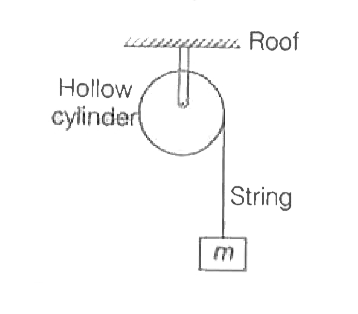 Solution in Telugu
Solution in Telugu
2g3
g2
5g6
g
The correct Answer is:B
Let tension in string is T and tension T is rotating the hollow cylinder. Torque produced in hollow cylinder, tua=Iα Moment of inerita of cylinder I=MR2 where M = mass of cylinder and R = radius of cylinder.
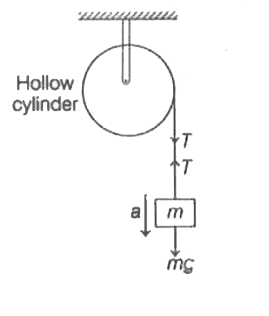
Angular acceleration α=aR, where a= acceleration.
⇒τ=MR2.aR=MRa ⋯(i)
Also torque τ=F.R=TR ⋯(ii)
Equating Eqs . (i) and (ii) we get TR = MRa
⇒T=Ma
Now Mg -T = Ma
Mg - Ma = Ma ⇒2Ma=Mg
⇒a=g/2
Topper's Solved these Questions
Similar Questions
A car moving with a certain velocity jumps form an inclined plane placed at one bank of a river and reaches the other bank by attained a maximum height of 80 m if the same car moving with the same velocity jumps from another inclinded plane having different angle of inclination and reaches the same point on the other bank by attaining maxmimum height of 45 m then the width of the river is
03:23View SolutionA mass 'm' is supported by a massless string wound around a uniform hollow cylinder of mass m and radius R. If the string does not slip on the cylinder, with what acceleration will the mass fall or release?
06:36View SolutionThe acceleration of the block (A) and (B) respectively in situation shown in the figure is: (pulleys and string are massless).
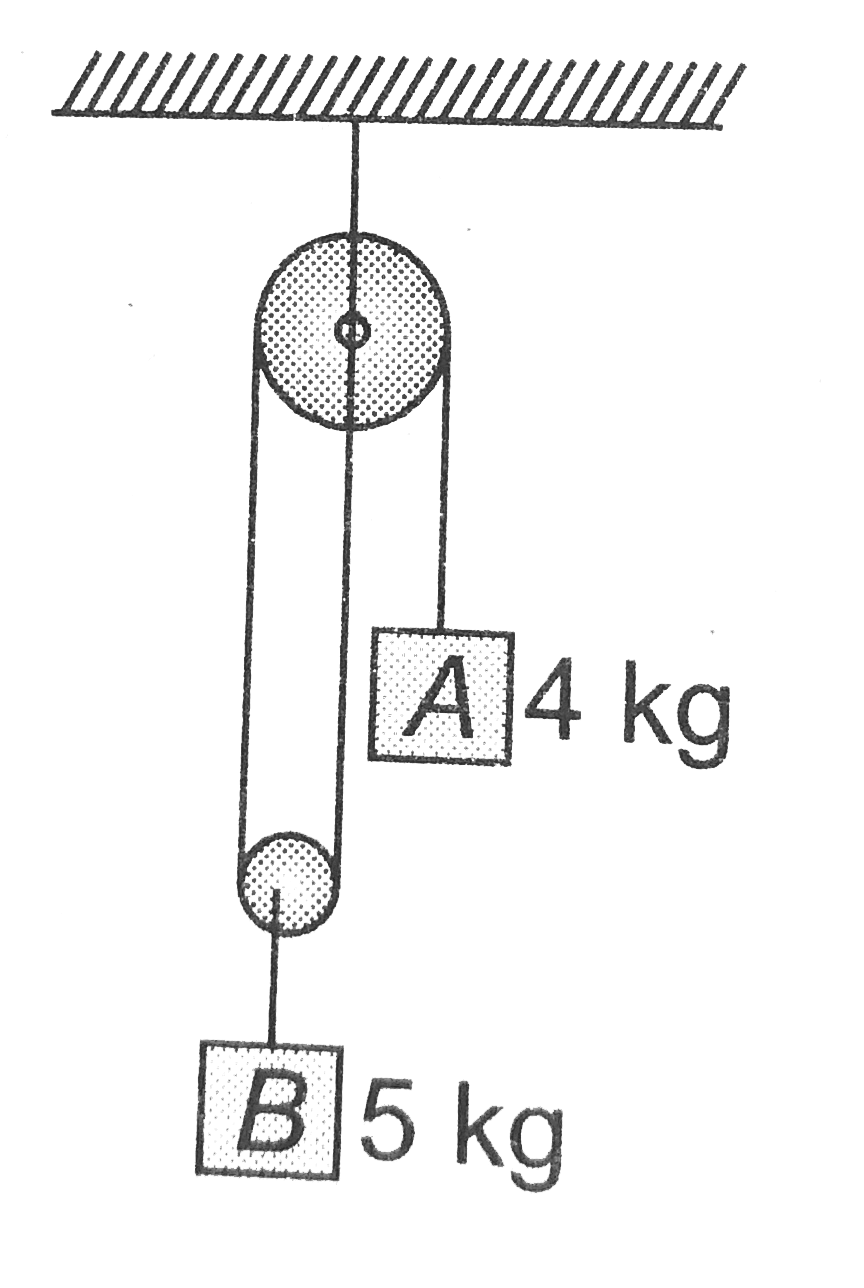 View Solution
View SolutionUniform rod Ab is hinged at the end A in the figure. The other end of the rod is connected toa block through a massless string as shown. The pulley is smooth and massless. Masses of the block and the rod are same and are equal to 'm'. Acceleration due to gravity is g. The tension in the thread and angular acceleration of the rod just after releases of block from this position are
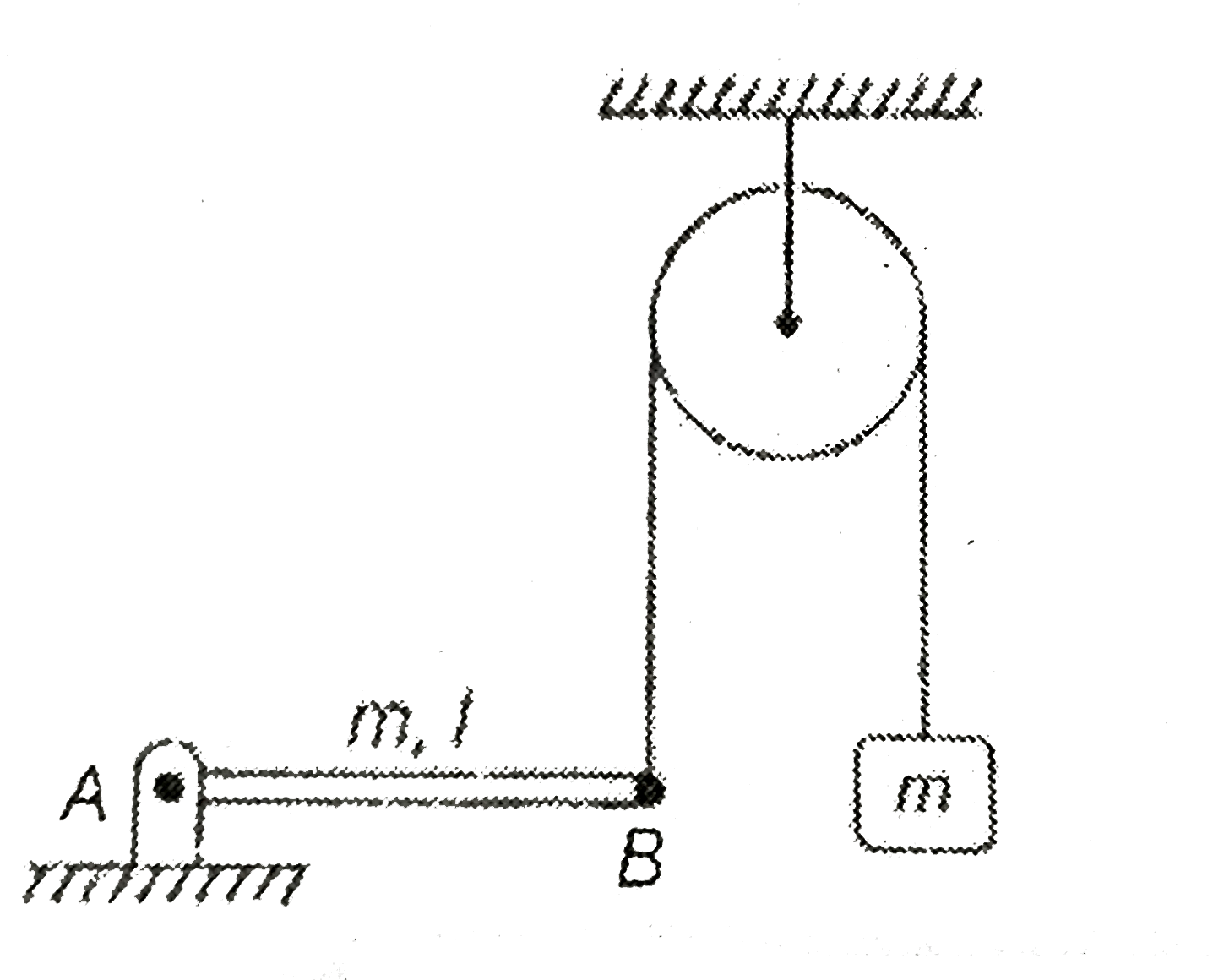 02:38View Solution
02:38View SolutionA long solenoid carrying a current I is placed with its axis vertical as shown in the figure. A particle of mass m and charge q is released from the top of the solenoid. Its acceleration is (g being acceleration due to gravity)
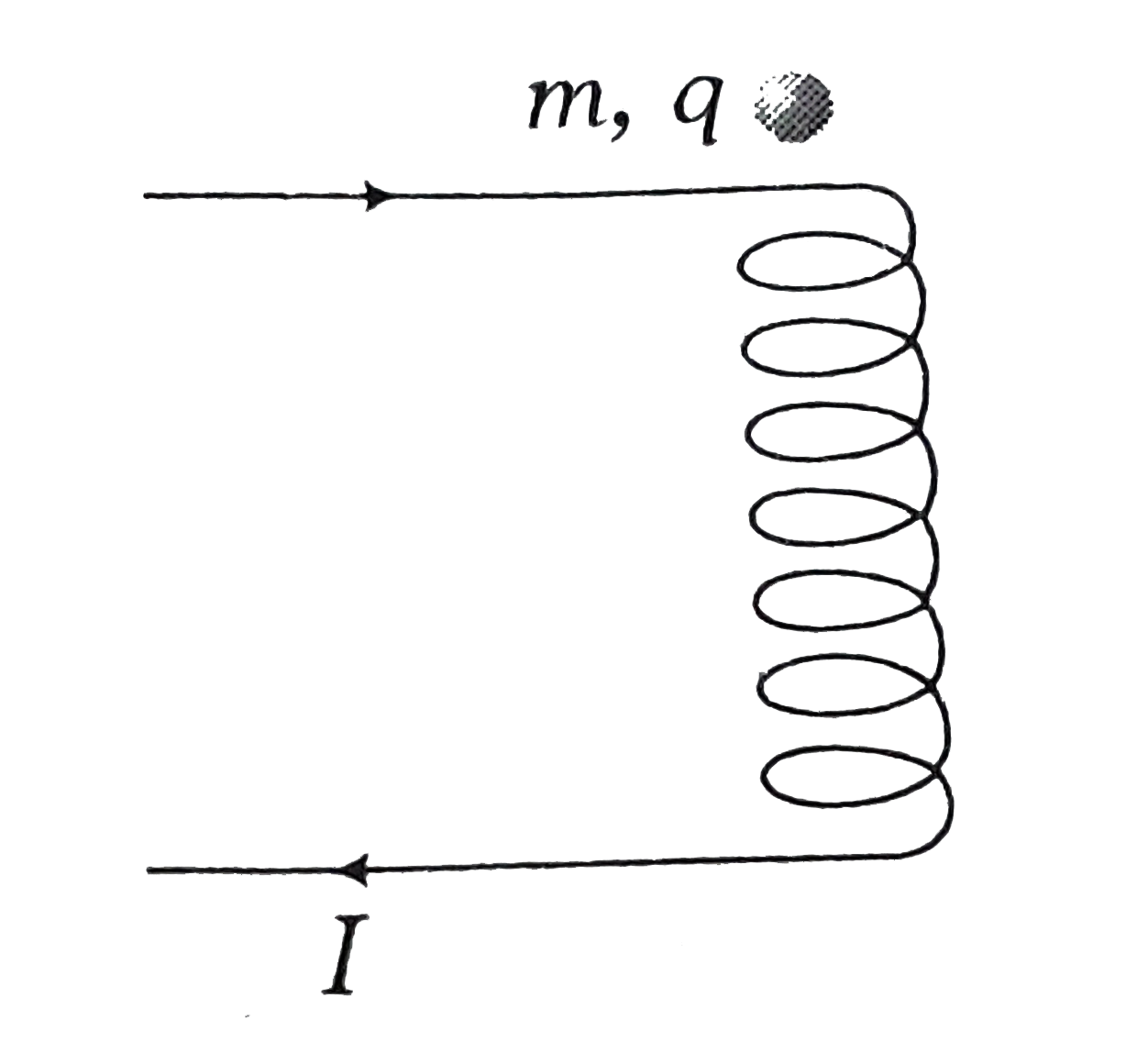 05:48View Solution
05:48View SolutionA mass M is supported by a massless string wound round a uniform cylinder ofmass M and radius R. On releasing the mass from rest, it will fall with acceleration?
02:35View SolutionTwo bodies of mass 4 kg and tied to the ends of a massless string. the string passes over a pully which is frictionless (see figure). the acceleration of the system in terms of acceleration due to gravity (g) is:
04:05View SolutionIn the figure shown, the blocks have equal masses. Friction, mass of the string and the mass of the pulley are negligible. The magnitude of the acceleration of the centre of mass of the blocks is (Acceleration due to gravity = g).
04:37View SolutionThe system shown in the following figure is in equilibrium and at rest. The spring and string are massless. Now, the string is cut. The acceleration of mass 2m and m, just after the string is cut, will be
 View Solution
View Solution(A):The body falls freely,when acceleration of body is equal to acceleration due to gravity. (R ):A body falling freely,when acceleration of body is equal to acceleration due to gravity. (R ):A body falling freely will have constant velocity.'
03:39View SolutionA mass 'm' is supported by a massless string wound around a uniform hollow cylinder of mass m and radius R. If the string does not slip on the cylinder, with what acceleration will the mass fall or release?
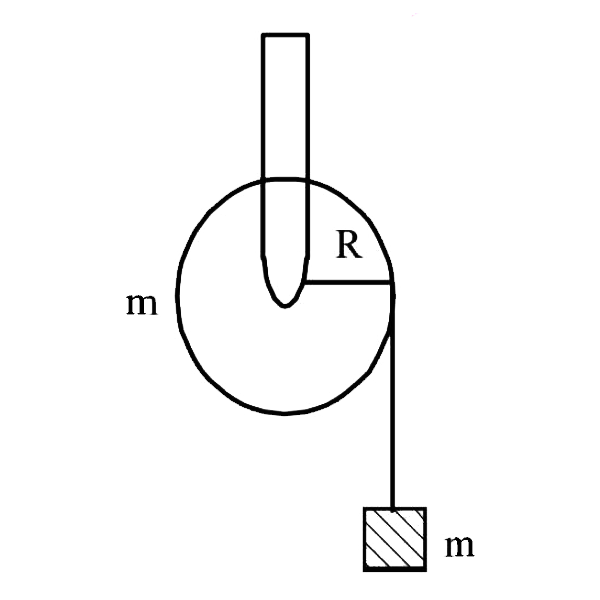 View Solution
View SolutionA mass m is supported by a massless string wound around a uniform hollow cylinder of mass m and radius R. If the string does not slip on the cylinder, with what acceleration will the mass fall on release ?
 08:36View Solution
08:36View SolutionUniform rod AB is hinged at the end A in the figure. The other end of the rod is connected to a block through a massless string as shown. The pulley is smooth and massless. Masses of the block and the rod are same and are equal to 'm'. Acceleration due to gravity is g. The tension in the thread and angular acceleration of the rod just after releases of block from this position are
 01:42View Solution
01:42View SolutionA long solenoid carrying a current I is placed with its axis vertical as shown in the figure. A particle of mass m and charge q is released from the top of the solenoid. Its acceleration is (g being acceleration due to gravity)
 02:41View Solution
02:41View SolutionTwo bodies of mass 4 kg and 6 kg tied to the ends of a massless string. the string passes over a pully which is frictionless (see figure). the acceleration of the system in terms of acceleration due to gravity (g) is:
04:22View Solution

